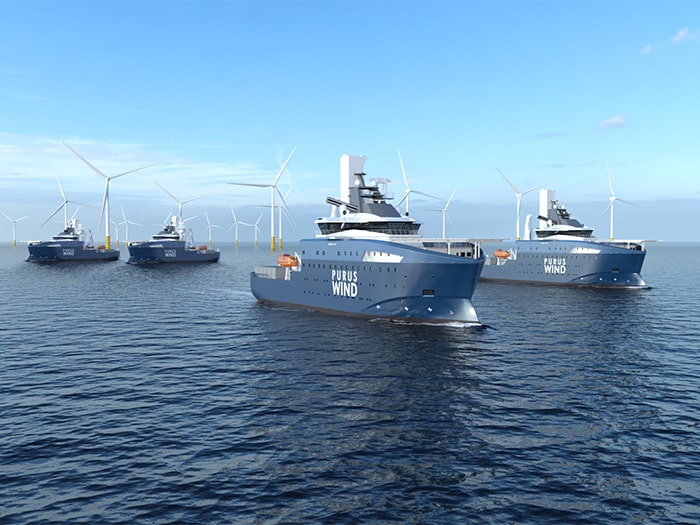
Vard wins contract for two battery-hybrid, methanol-ready CSOVs
Written by Nick Blenkey
Purus CSOVs will each have two Brunvoll azimuth thrusters for propulsion, and two retractable azimuth thrusters and a tunnel thruster for maneuvering.
Fincantieri’s Norwegian-based Vard subsidiary has booked an order from U.K. based Purus Wind for the design and construction of two battery-hybrid, methanol-ready CSOVs (commissioning service operation vessels). The agreement includes an option for two additional vessels.
The two CSOVs are being built to the 85.1 meter long VARD 4 19 design developed by Vard Design in Ålesund, Norway. The battery hybrid system will allow the vessels to run with zero emissions for periods. They will be prepared for charging at sea so they can be connected to the power grid in the wind farm/harbor to charge batteries regularly without having to return to shore, The goal is to power operations with a minimum of additional energy sources to secure environmental benefits. The project has been awarded funding by the Norwegian Government’s Green Platform Initiative.
The vessels will also be prepared for future operation on methanol, providing an additional sustainable option.
“These vessels will support a pathway for our clients to decarbonize their operations and to maintain our position as a leader with the lowest carbon offshore wind support fleet,” said Tom Nevin, business head of Purus Wind. “We are also very excited about the potential of what will be the next generation of a very successful design with the ability convert to methanol with the flexibility of hybrid and zero emission mode.”
The battery-hybrid, methanol-ready CSOVs are designed to provide a highly versatile platform for all wind support operations, focusing on onboard logistics, comfort, large storage capacities and superior operability.
The vessels will be equipped with Vard subsidiary SEAONICS’ electric controlled motion compensated (ECMC) crane, securing efficient handling operations for a sustainable future. This system allows the load to be always close to the crane tip from the deck level to the TP platform, ensuring quick and safe cargo transfer.
The stepless walk-to-work-system is able to work with stepless access in a range from 15 to 30 meters above sea level and is suitable for both personnel and cargo transfer.




